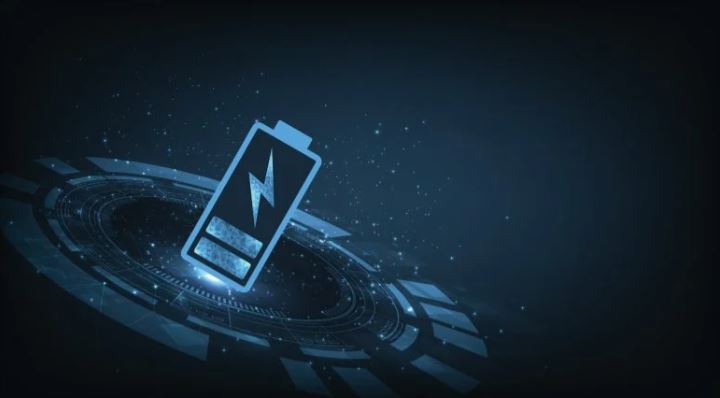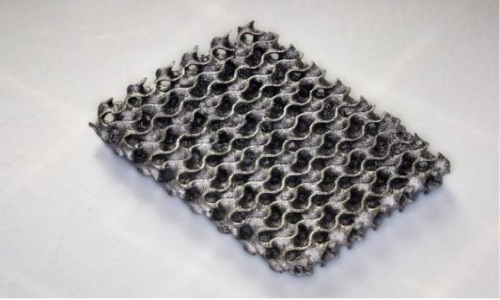


 5:52:35
5:52:35  2025-06-23
2025-06-23  916
916

A dry-process zinc-iodine battery from Adelaide offers safer, longer-lasting energy storage with high capacity and stability.
Researchers at the University of Adelaide have developed a new dry electrode for aqueous batteries that produces cathodes with more than twice the performance of both iodine and lithium-ion batteries.
“We have developed a new electrode technique for zinc–iodine batteries that avoids traditional wet mixing of iodine,” said the University of Adelaide’s Professor Shizhang Qiao, Chair of Nanotechnology, and Director, Centre for Materials in Energy and Catalysis, at the School of Chemical Engineering, who led the team.
“We mixed active materials as dry powders and rolled them into thick, self-supporting electrodes. At the same time, we added a small amount of a simple chemical, called 1,3,5-trioxane, to the electrolyte, which turns into a flexible protective film on the zinc surface during charging. This film keeps zinc from forming sharp dendrites – needle-like structures that can form on the surface of the zinc anode during charging and discharging – that can short the battery.”
Safer, sustainable alternative to lithium-ion
Aqueous zinc–iodine batteries provide exceptional safety, sustainability, and cost benefits for grid-scale energy storage, but their performance still lags behind that of lithium-ion batteries.
The team published their results in the journal Joule.
“The new technique for electrode preparation resulted in record-high loading of 100 mg of active material per cm2,” said the University of Adelaide’s Han Wu, Research Associate, School of Chemical Engineering, from the team that worked on the study.
“After charging the pouch cells we made that use the new electrodes, they retained 88.6 per cent of their capacity after 750 cycles and coin cells kept nearly 99.8 per cent capacity after 500 cycles. We directly observed how the protective film forms on the zinc by using synchrotron infrared measurements.”
Real-world potential for grid-scale storage
With high iodine loading and a strong zinc interface, each battery can store significantly more energy at a lower weight and cost. This advancement could move zinc–iodine batteries closer to practical use in large-scale or grid storage applications.
There are several advantages of the team’s invention over existing battery technology:
“The new technology will benefit energy storage providers – especially for renewable integration and grid balancing – who will gain lower-cost, safer, long-lasting batteries,” said Professor Qiao.
“Industries needing large, stable energy banks, for example, utilities and microgrids, could adopt this technology sooner.”
The team has plans to develop the technology further to expand its capabilities.
“Production of the electrodes could be scaled up by using to reel-to-reel manufacturing,” said Professor Qiao.
“By optimizing lighter current collectors and reducing excess electrolyte, the overall system energy density could be doubled from around 45 watt-hours per kilogram (Wh kg−1) to around 90 Wh kg−1. We will also test the performance of other halogen chemistries such as bromine systems, using the same dry-process approach.”
Reality Of Islam |
|

Water may s

"It is

The process

Astronomers
 9:3:43
9:3:43
 2018-11-05
2018-11-05
10 benefits of Marriage in Islam
 7:5:22
7:5:22
 2019-04-08
2019-04-08
benefits of reciting surat yunus, hud &
 9:45:7
9:45:7
 2018-12-24
2018-12-24
advantages & disadvantages of divorce
 11:35:12
11:35:12
 2018-06-10
2018-06-10
 6:0:51
6:0:51
 2018-10-16
2018-10-16
 9:30:2
9:30:2
 2021-11-12
2021-11-12
 8:25:12
8:25:12
 2022-03-09
2022-03-09
the happy life of mankind requirement
 6:36:36
6:36:36
 2022-01-25
2022-01-25
allah will not answer all your prayers
 6:56:28
6:56:28
 2022-01-01
2022-01-01
 1:38:41
1:38:41
 2021-12-08
2021-12-08
 6:14:3
6:14:3
 2023-01-18
2023-01-18
 9:42:16
9:42:16
 2022-10-19
2022-10-19
 5:41:46
5:41:46
 2023-03-18
2023-03-18
| LATEST |